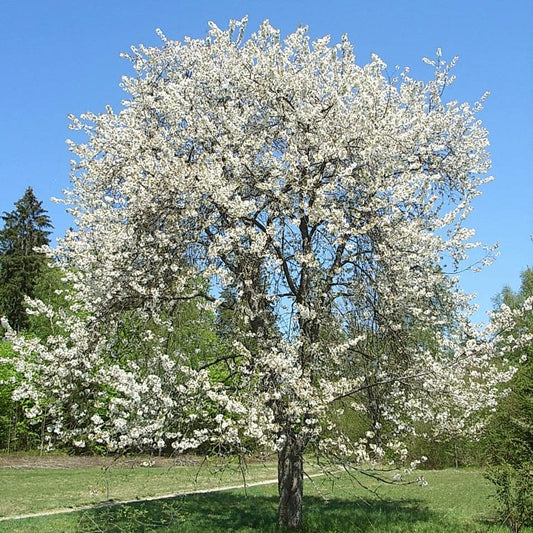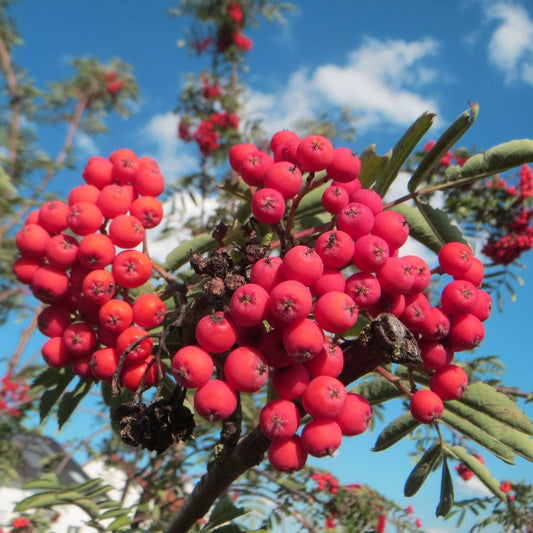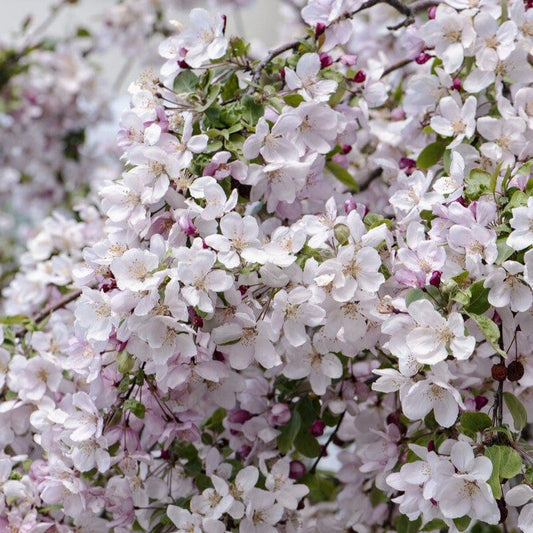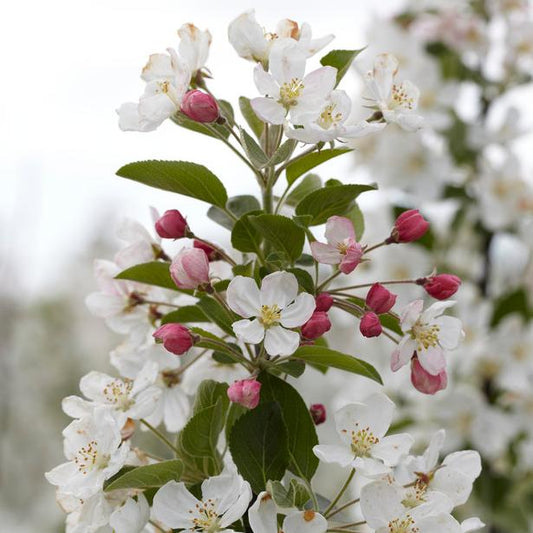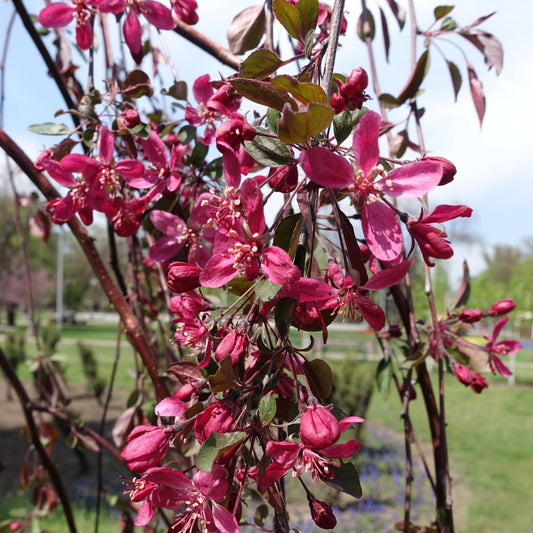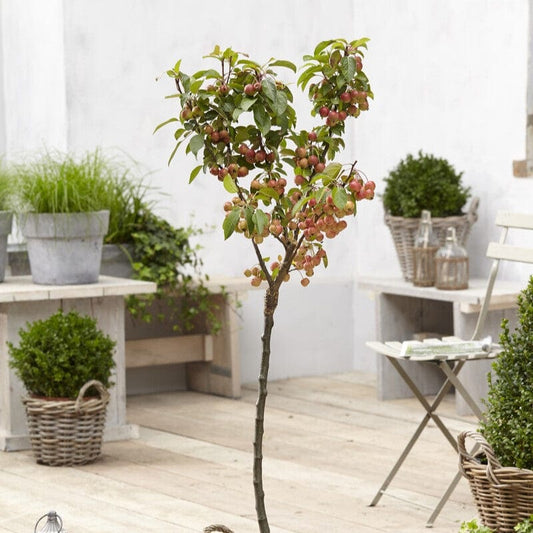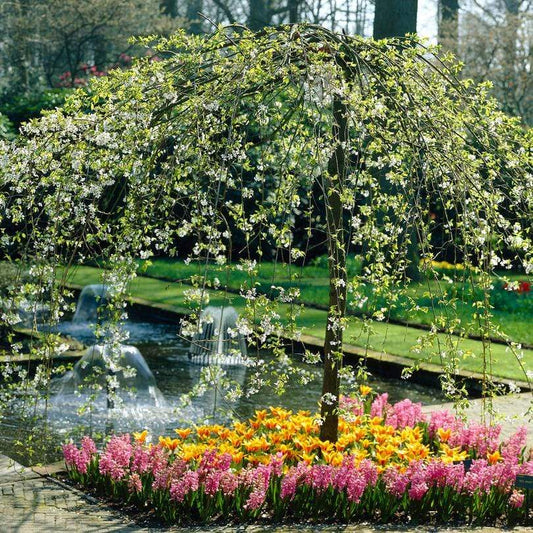Best Trees for Autumn Colour
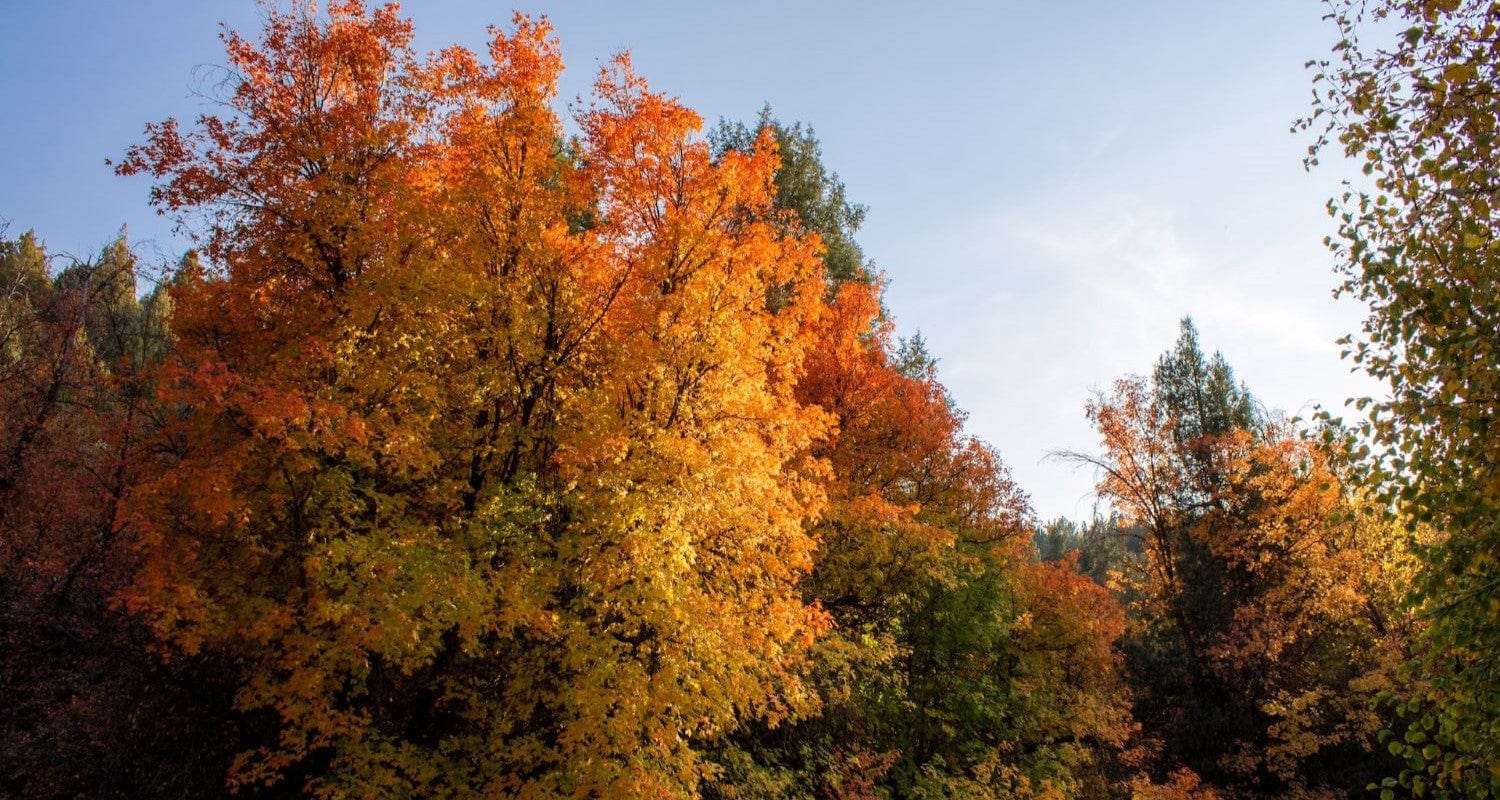
The key to a good garden is multi-season interest and trees for autumn colour enable this by magnifying the weakening autumn light and colouring up the garden when annuals and perennials have finished. There are numerous trees available, including hugely impactful small and slow growing trees that look fantastic in any garden bed. Feel the crisp autumn air against your skin and practise the ancient art of forest bathing, taking in the myriad colours that autumn affords. No season should be a bad season for the garden.
The best small trees for autumn colour
1. Cherry Blossom
Famed for their blossoms, there are several cherries that will light up your garden in autumn as well as spring. The best in class is probably sargentii cherry, but the weeping ‘Kiku-Shidare’ and columnar ‘Amanogawa’ make excellent choices if you have those tree shapes in mind. If you have a patio and want a cherry in a pot, try ‘Kojo-no-mai’. The ever popular ‘Kanzan’ is a great all-rounder with its floriferous display of double blossoms, pretty serrated foliage and deep autumnal hues. At Roots, we graft our cherries onto dwarfing rootstocks so they grow slower, producing a more manageable size, better suited to the average garden. No garden is complete without cherry blossom.
2. Crabapple
Despite not being as popular as cherries, the humble crabapple's numerous benefits simply can’t be ignored and we can’t stop recommending them. In autumn, they look especially good with their brightly coloured fruits contrasting with yellow-orange foliage, but we can’t forget the gorgeous spring flowers. Excellent wildlife trees, crabapples are great for both bees and birds and are excellent pollinators of apples; and just like with cherries we put them on rootstocks so they can better fit into your garden.

3. Rowan
Just like crabapples, rowans are among the best trees for small gardens. In autumn, their stunning pinnate leaves turn deep shades of red, orange and yellow that again contrast with pretty berries that last well into winter. So effective at attracting birds, the latin name of the most famous species (aucuparia) literally means bird catching, ostensibly because they were used to catch birds in the Middle Ages.
4. Japanese Maple
Japanese maples, or Acer palmatum, constitute excellent small garden trees with stunning richly coloured five-lobed and often serrated foliage with elegant bushy forms that come alive in autumn. Perfect in a pot, you’ll just need to mix in a bit of ericaceous soil and these beauties will provide the zen you deserve.
5. Paperbark Maple
A highly coveted, slow growing Acer, the Paperbark Maple's rich peeling bark and intense autumn colour make it a staple of show gardens and garden beds. Notoriously difficult for nurseries to propagate and hence relatively expensive, this tree is at its best when underplanted with perennials.
6. Dogwood
A varied and underrated genus, dogwoods make an excellent choice for small gardens with floriferous displays, colourful bird-attracting fruits and great autumn colour. Most species can be identified by the large white or pink bracts (colourful leaves) that surround its inconspicuous flowers, which give the impression of a huge flowering display. Two of the best are the variegated Wedding Cake Tree, named so for its tiered branching, and the aptly named ‘Rainbow’ that will produce a large spectrum throughout the seasons.
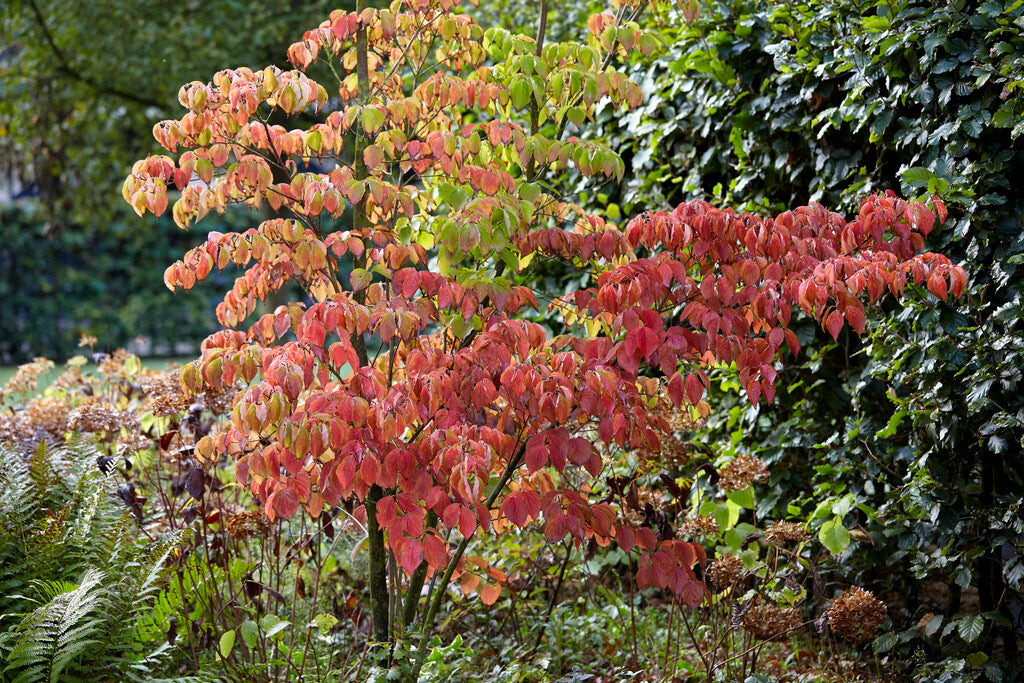
7. Stag’s Horn Sumach
A striking, unique tree that’s impossible not to notice (but rarely identified), Stag’s Horn Sumach is a North American import named so after its branches that resemble antlers. With exotic serrated pinnate leaves and velvety fruits, it can either be grown as a shrub or small tree.
8. Persian Ironwood
Another lesser known that should be better known, the Persian Ironwood produces a kaleidoscopic display in the autumn once its large glossy deeply venated foliage turn. Not only do the autumnal leaves stay on the tree for several weeks, it’s one of the first to flower with ruby-red flowers appearing in clusters in February.
Large native trees
1. Beech
There’s nothing quite like a beech forest in that it’s one of the few genera where leaves hang onto the trees right until the new ones emerge, leading to a long lasting carpeting of the forest floor and colour in the canopy where else it is bare. Not really suitable for small gardens if left alone, beech trees can be kept small through pruning or turned into a hedge. Try Copper Beech for more vivid colour in the summer months.
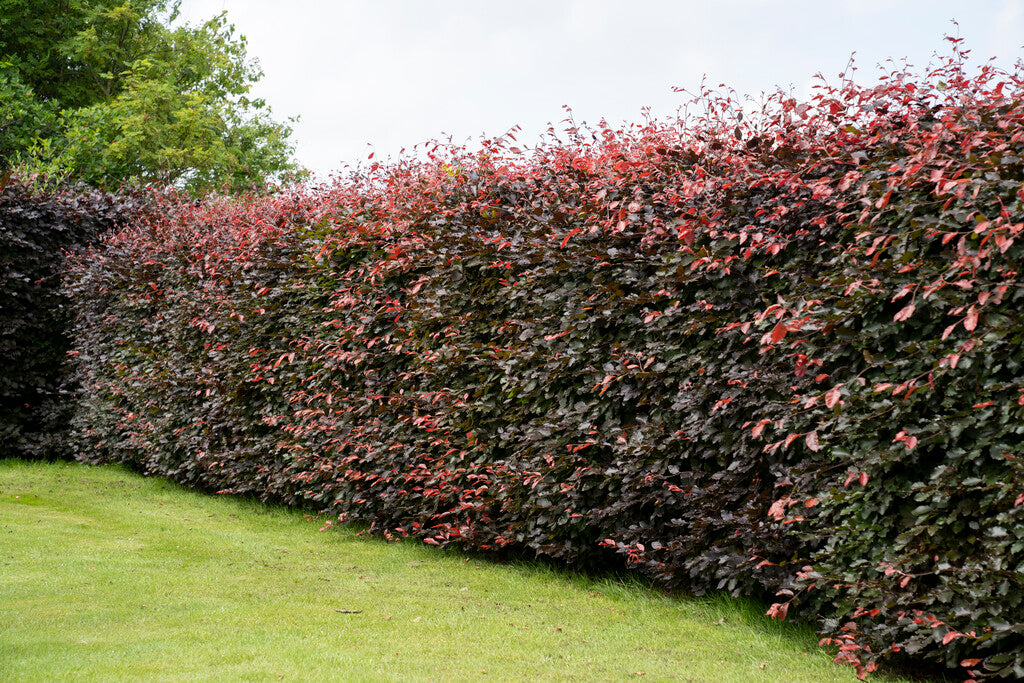
2. Birch
A staple of the forest, our native Silver Birch looks majestic in autumn due to the dappled light it produces and the fluttering yellow foliage that creates the perfect backdrop against its bright white trunk. Better suited to the small garden is the weeping variety ‘Youngii’ or its cousins on from the landmass, the Paper or Himalayan birches, which look better as young trees as Silver Birch stems first start brown.
The American reds
These nominally large trees produce North America's East Coast’s magical “fall” - those intense reds, oranges, yellows and purples that you see in the movies - but are now common in Britain as landscape trees. Altogether quite slow growing in the average garden soil, they can be kept a manageable size through pruning or by planting in a pot.
1. Sweet Gum
The evocative Sweet Gum, or Liquidamber, is certainly no misnomer as both produces an unrivalled display of warm tones and a sweet smelling resin. With maple-like five-lobed wavy foliage and characteristic spiky gumballs (seed pods), left alone most varieties produce a pleasing fastigiate form.
2. Red Maple
Arguably the autumn colour tree - this maple produces the most dazzling display of all once its characteristic indented foliage turns. Then there is the famous samaras - helicopter seeds - that will spin to the ground once mature. It is also one of the few trees used in commercial syrup production, although you’ll have to wait 75 years to harvest.
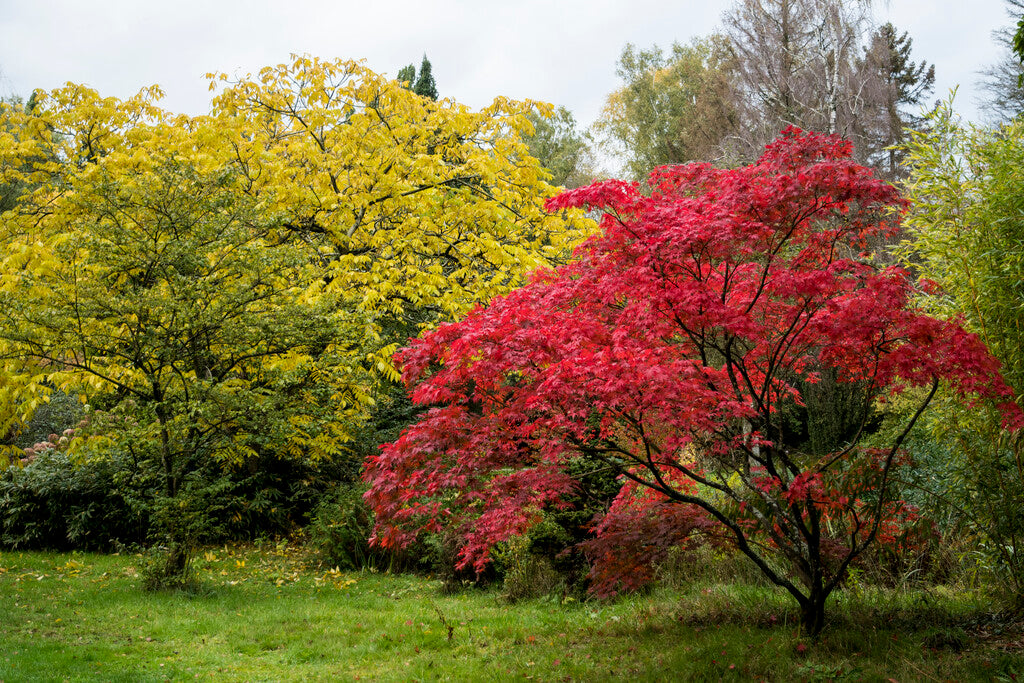
3. Northern Red Oak
Similar to our native oak, but perhaps flashier, the Northern Red Oak differs in that its leaves are spiny rather than sinuate and that they colour up in the autumn. Fancisinatingly, this species formed a mutualistic relationship with the now extinct passenger pigeon. In giving up its acorns, the tree benefited from the ravenous bird breaking branches and causing leaf fall that in turn would light up in dry conditions, destroying its fire vulnerable competition.
4. Black Tupelo
With a pleasing pyramidal shape, the Black Tupelo’s dark bark contrasts fantastically with its elliptical leaves once they turn. Extremely long lived, it’s not uncommon for members to be half a millenia old - making them the oldest hardwoods in North America. The tree produces berries that are very nutritious and great for attracting birds.
5. Tulip Tree
Fast growing, magnificently shaped, this gentle giant is the largest tree on the East Coast and among the earliest to flower. A relative to the Magnolia, the Tulip Tree produces large nectar-rich cup-shaped flowers with biocoloured orange-yellow petals and a yellow centre.
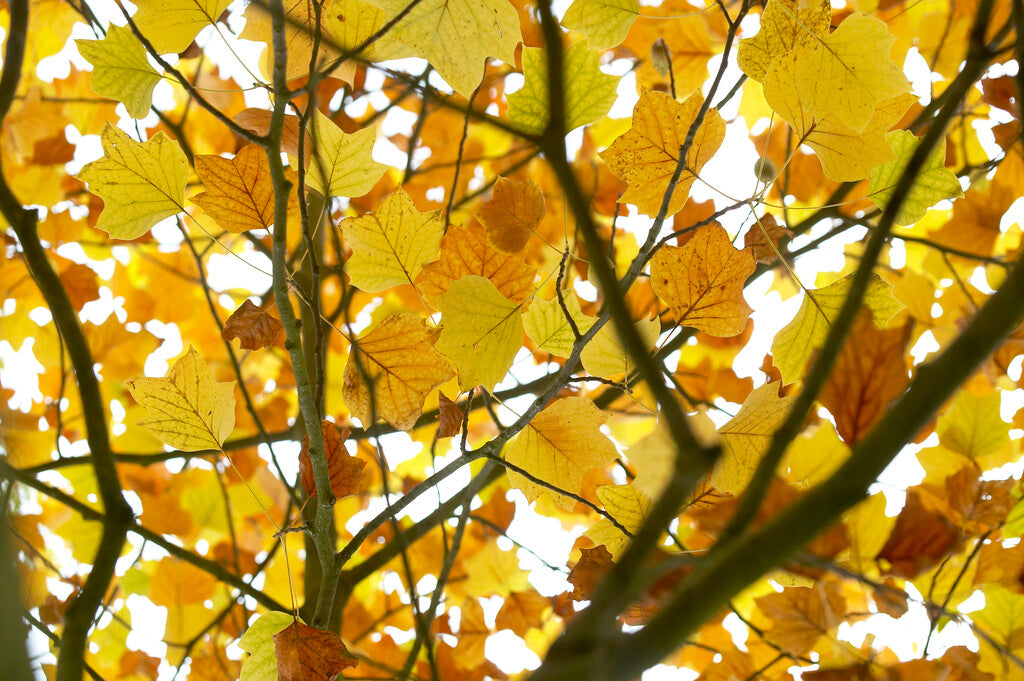
Last updated: 20/11/2023













